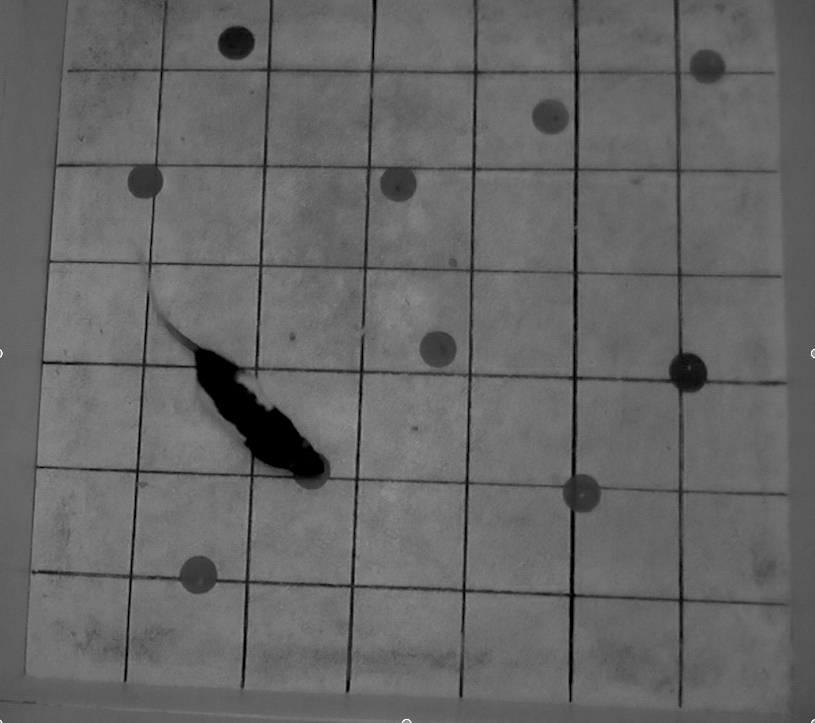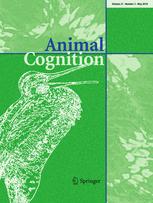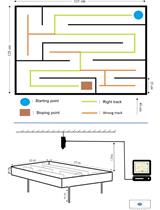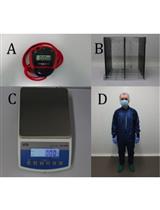- EN - English
- CN - 中文
The Traveling Salesman Problem (TSP): A Spatial Navigation Task for Rats
旅行商问题(TSP):大鼠空间导航任务
发布: 2018年06月05日第8卷第11期 DOI: 10.21769/BioProtoc.2870 浏览次数: 5652
评审: Jena HalesBeatriz CastroAnonymous reviewer(s)
Abstract
The Traveling Salesman Problem (TSP) is a behavioral test used to measure the efficiency of spatial navigation. It is an optimization problem, in which a number of baited targets are placed in an arena, and as the subject travels between the targets, the route is recorded and compared to chance and optimal routes. The TSP is appealing for the study of learning, memory, and executive function in nonhuman animals because the memory requirements can easily be modified with minor adjustments to task parameters. In the standard version of the task, rats are initially pre-trained to forage for bait in the arena. Once the animals consistently retrieve the bait, they are tested with a set of novel target configurations, and their behavior is recorded. The videos are then scored to produce several measures of performance.
Keywords: Spatial navigation (空间导航)Background
The Traveling Salesman Problem (TSP) is a spatial navigation task in which participants are asked to select the shortest possible route that visits each target in a spatial array. This task has been of interest to computer and cognitive scientists for some time (Best, 2006), but has more recently been studied from the perspective of comparative psychology (e.g., de Jong et al., 2011; Gibson et al., 2012; Baron et al., 2015). Humans are inexplicably good at finding solutions to this problem – despite its mathematical intractability, human participants can rapidly and easily produce solutions that are nearly optimal (MacGregor et al., 2000). One possible explanation for this high level of performance is that the task capitalizes on evolved processes used for natural behaviors like foraging (Blaser and Ginchansky, 2012; Blaser and Wilber, 2013). We were therefore interested in the mechanisms by which non-human animals complete the task (Bellizzi et al., 2015; Goldsteinholm and Blaser, 2015).
Although human participants typically use either a computer or paper and pencil to solve the TSP, we used the radial arm maze as a model to design a comparable task for rats (Blaser and Ginchansky, 2012). The task has not been widely used with nonhuman animals, but already several variant procedures exist. For example, Bures et al. (1992) used a TSP design in which animals were not rewarded until after all targets had been visited, with subjects trained on the same target configurations for 10 consecutive days prior to testing. Miyata et al. (2010) required pigeons to peck at a touch-screen in order to receive a food reward at the end of the test. Important variations across procedures involve whether food is available at each target or only at the end, whether animals are exposed to a specific spatial configuration more than once, and the scale of the spatial arena relative to the body size of the animal. We selected a protocol in which novel configurations are tested to reduce the degree to which performance relies on long-term spatial memory, and in which a relatively large arena encourages distance minimization.
Materials and Reagents
- Rats
- Ethanol
- Targets
- Semi-transparent purple vinyl index card dividers (Oxford Esselte, catalog number: 73153 )
- Rodent food dishes
- Sterilized bottle caps
- Semi-transparent purple vinyl index card dividers (Oxford Esselte, catalog number: 73153 )
- Bait
- Froot Loops® cereal (or a generic equivalent)
- Fruity Pebbles® or Cocoa pebbles® (one pebble per target)
- Froot Loops® cereal (or a generic equivalent)
- Configuration Templates
During pre-training, targets are placed randomly and do not require templates (see Procedure). In the test trials, however, the spatial arrangement of targets is critical. For this purpose, we create a template out of posterboard which is cut to fill the entire arena floor. Holes (approx. 2.5” diameter) are cut in the posterboard where the targets will be placed. Before each trial, the template is placed in the open field, and targets are then placed in the holes. The template can then be lifted out of the open field, leaving the targets located precisely in the arena.
Equipment
- Open Field Arena (Figure 1)
The animals are tested in a 90 x 90 x 75 cm open field arena made of plywood. It is painted white, with a black grid painted on the floor. Any large standard open field should work, although the same type should be used consistently since the arena size and shape are expected to affect task performance measures.
Figure 1. Photo of the open field arena with ten baited targets and a rat - Stopwatch
A simple stopwatch (minutes/seconds) is used to time the animals in the task. - Video Camera
A video camera recording high-definition video files to SD card is used to record all trials. The video camera resolution must be sufficient to see (1) whether a piece of bait has been removed from the target in low lighting conditions, and (2) whether the vibrissa (whiskers) of the animal contact the target. - White Noise generator (e.g., HoMedics, model: SS-2000G/F-AMZ )
We use a standard home-use white noise generator, HoMedics SS-200G/F-AMZ. Any standard model of white-noise generator designed for home or laboratory use would be appropriate. The white noise generator helps to mask any distractions due to extraneous sounds in or near the testing room, which reduces behavioral variability in the task.
Procedure
文章信息
版权信息
© 2018 The Authors; exclusive licensee Bio-protocol LLC.
如何引用
Blaser, R. E. (2018). The Traveling Salesman Problem (TSP): A Spatial Navigation Task for Rats. Bio-protocol 8(11): e2870. DOI: 10.21769/BioProtoc.2870.
分类
神经科学 > 行为神经科学 > 学习和记忆
神经科学 > 行为神经科学 > 实验动物模型 > 大鼠
您对这篇实验方法有问题吗?
在此处发布您的问题,我们将邀请本文作者来回答。同时,我们会将您的问题发布到Bio-protocol Exchange,以便寻求社区成员的帮助。
Share
Bluesky
X
Copy link












